Guest Blog
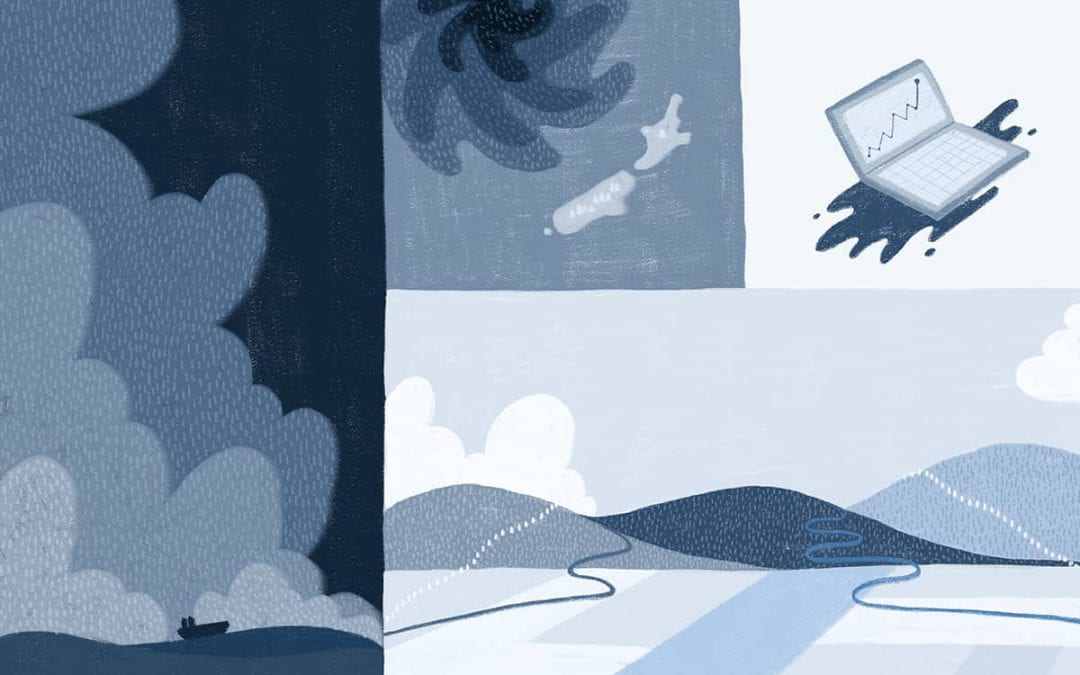
A raindrop hits the ground
4 September 2023
A collaboration between scientist Céline Cattoën-Gilbert and illustrator Jean Donaldson.
It’s Sunday 14 August 2022, and I’m sitting in front of my computer. I feel a surge of numbing emotions and prickly memories gushing through me. My eyes scan the river forecasts for Westport, mentally tracing and mapping the ominous contours of rising water levels.
I research how to develop, improve and communicate flood forecasting models. Today the models have made me pause. Some of the highest predicted scenarios look like what occurred in 2021, when widespread flooding devastated Westport. Thousands of people had to be evacuated, and insurance companies paid out $97.2 million in damages.
I breathe and tentatively remind myself that uncertainties are still very large. We are five days ahead of a massive storm – known as an atmospheric river – hitting the West Coast and Tasman regions. We have time.
The Covid-19 pandemic thrust modelling into the public consciousness in Aotearoa New Zealand. Models are simplified representations of real-world processes. They are one of the tools available to decision-makers facing tough choices. For flood forecasting, we’re working with an unfathomably complex system to try and make predictions across many scales: from atmospheric to catchment to the human scale.
Flip flops. The supercomputer clocks.
It’s Monday morning. I lean forward watching my screen, and feel a mix of relief and frustration. The models are flip flopping between a widespread urban flooding scenario and a less severe rural flooding scenario for Westport. With each forecast update, I am mesmerised by the oscillation of the worst case scenarios between river forecast updates: one world where the storm heads on to the West Coast and a parallel one where it moves north, hitting Nelson. The following day the West Coast declares a regional state of emergency, enabling a strategic and coordinated response. We still have time.
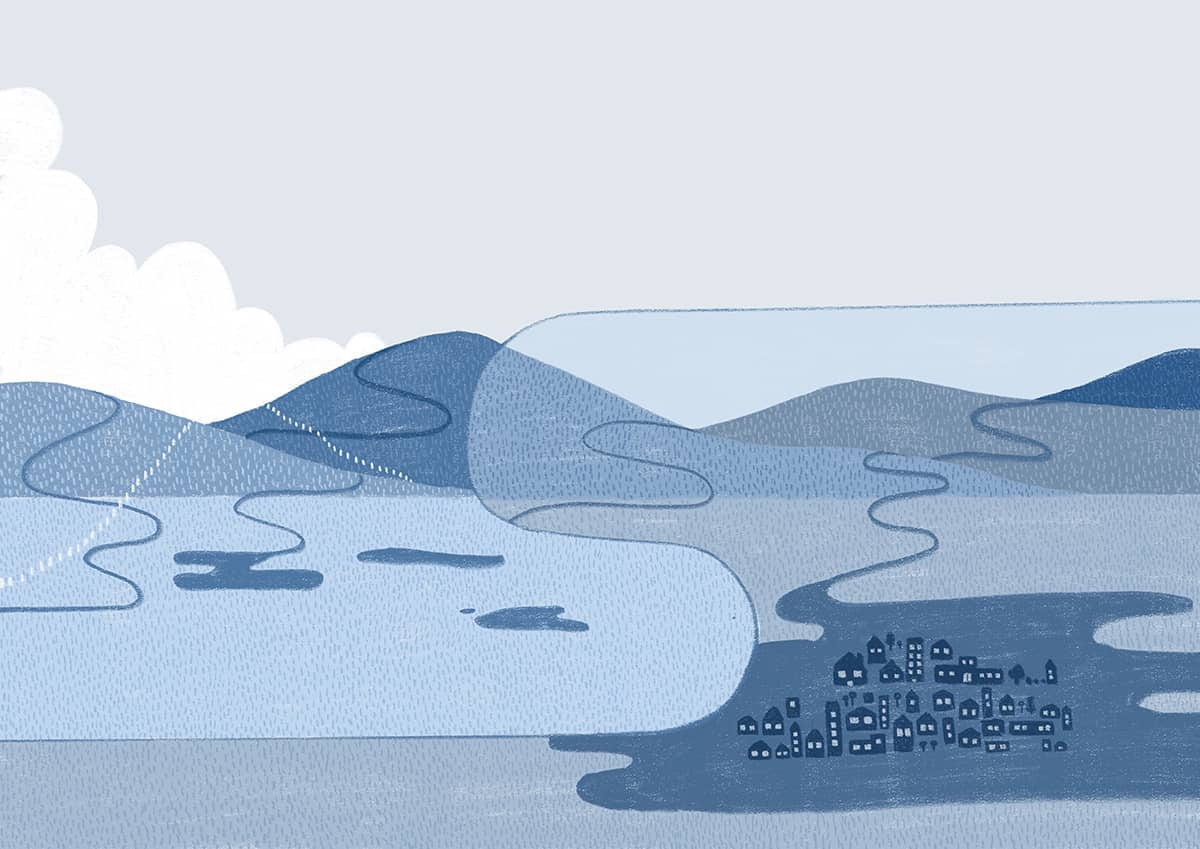
Flip flops. The rain drops. The supercomputer continues to clock.
In 1922, Lewis Richardson attempted to solve weather prediction equations — by hand. A century later, we have bigger, faster and more advanced supercomputers — powerful machines capable of processing enormous amounts of data and performing complex calculations. We have technology advances in observations with satellites. Breakthroughs in modelling the pathway of rainfall from the atmosphere to the rivers. We now have access to unprecedented and enormous improvements in our predictions. But despite all our efforts and advances, it is still difficult to predict and prepare for floods.
Enter chaos, the butterfly effect, and the human mind.
In the 1960s, Edward Lorenz was bewildered by his failed weather modelling experiments. Using the same computer model, and the same initial conditions but rounded to three decimals, two dramatically different results occurred. The weather is predictable, but given ever so slightly different conditions at the beginning of the simulation, the forecast will deviate over time. Dramatically. Chaotically. Known as the butterfly effect, the amount of difference in the starting points of the two scenarios is so small that it is comparable to a butterfly flapping its wings.
Flip flops. The rain continues to drop. Now the ground begins to soak. Relentlessly, the supercomputer clocks.
When a raindrop hits the ground, it faces a myriad of options to travel through the landscape to reach the river. Sliding over the land, percolating below the surface, gushing through tiny holes from bed rocks, roots, urban stormwater pipes. Knowing the correct pathway will tell us how fast and how high the river roars, where the water rises, and where help may need to go.
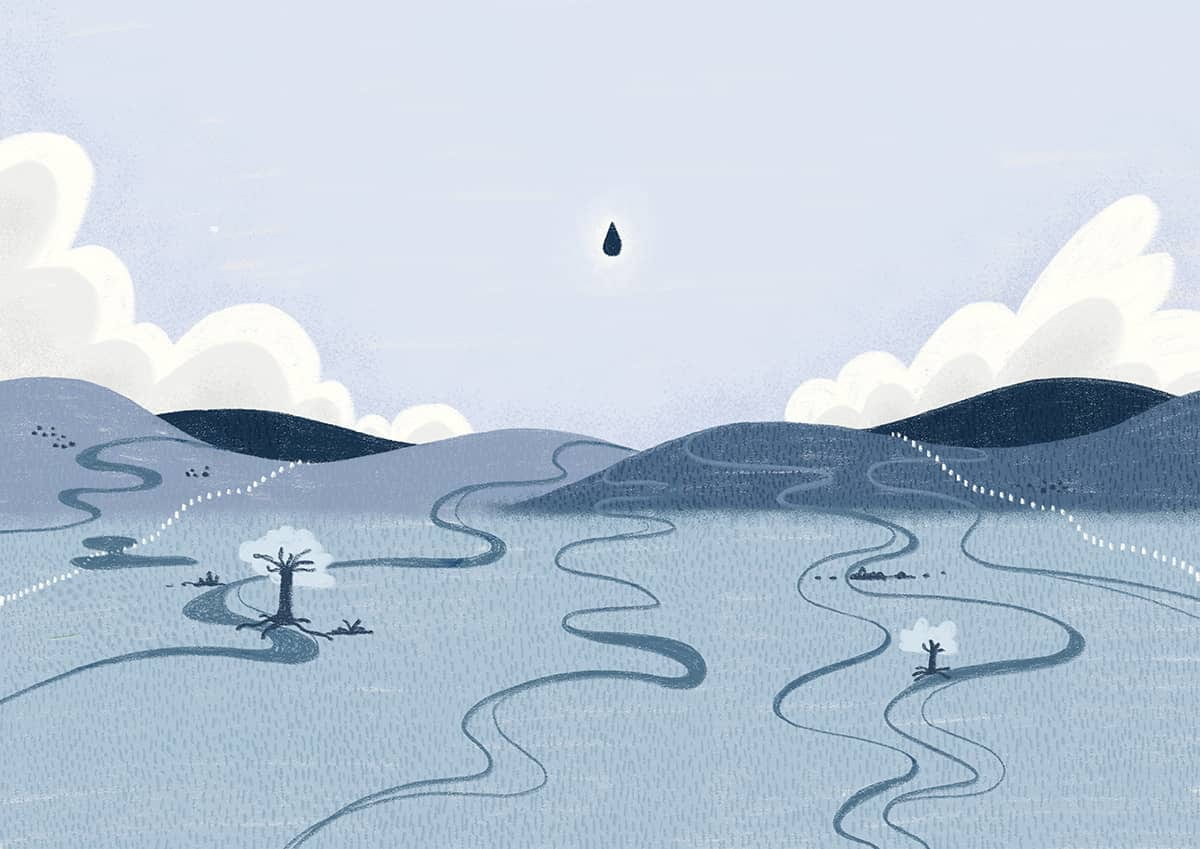
Flip flops, flip flops, flip flops. The rain pours onto saturated ground. The supercomputer delivers new scenarios. Which one will unfold?
The butterfly effect means that we need to capture uncertainties at each step of the prediction process. Instead of relying on just one computer model to predict floods, ensemble forecasting uses a whole bunch of them. These scenarios consider small variations in rainfall, river levels, and how much water is already in the soil. Each model might give a slightly different prediction based on its own initial state, assumptions, and calculations. By looking at all these different predictions together, we can consider a range of possible outcomes to prepare for.
Tick tock. The humans talk.
Science is meant to help people foresee the invisible. To imagine how rising forecasted river levels could transform into a chest-height wall of water or an ocean of mud at their doorstep. Humans must be able to imagine that the worst-case scenarios of the forecasts could occur. Even when the rain outside has stopped, the rushing river upstream may still be bursting through its banks.
But the human mind can struggle to envision the possibility of an extreme flood forecast becoming reality, even after it’s occurred. The sheer devastation of Cyclone Gabrielle was far beyond what I could possibly imagine as I drove north of Gisborne Tairawhiti recently. Witnessing its aftermath with my own eyes months later, I was astounded by the massive volumes of sediment obscuring the severely eroded riverbanks. The trees and trunks uprooted and scattered in seemingly random locations. The roads scarred and interrupted by countless landslides. My heart sank at the sight of the hilly landscapes disfigured, marred by erosion over kilometres and kilometres of land. I still can’t imagine the nature of forces at play needed to cause such a profound and lasting impact on the land.
We are running out of time. By Tuesday, exhaustion runs through my body and my mind. I impatiently check updated river forecasts and scrutinise every nuance in our scenarios. A pattern is emerging from the chaos. The latest modelling is reassuring and indicates an easing in predicted intensity for Westport. But the next day, north of Westport, the Maitai River in Nelson city will burst its banks. More than 200 homes will be evacuated and numerous landslides will be triggered.
Aotearoa has experienced some serious floods over the last few years, and we’re going to have more. For those whose lives and homes have been devastated by these floods, the recurring threats of floods surpass imagination with a haunting memory. The mere sound of a raindrop, the scent of damp streets can trigger a rush of fear. The chatter of past emotions can overwhelm the human mind in an instant. So, when the river’s forecasts hint at receding waters from a second front for Westport during that August flood event, a distinct kind of strength emerges for Coasters. It takes incredible mental stamina, clarity of communication, trust in the science, the responders, the authorities, and the unity of the community to divert emergency efforts to their neighbouring catchment — where help is most urgently needed. Emergency responders, with their unyielding commitments, are unsung heroes of our changing climate.
Working with decision-makers has been an invaluable personal and professional growth experience. Through this, I have learnt that models don’t need to be perfect to be insightful. I have peeked into some of the complex pathways from predicting floods to decision-making for early actions. From that experience, I see that we urgently need improved integrated predictions across disciplines of science, natural hazards, forecasting, human behaviour communication and social science.
We must continue to move towards a world where we better weave together our science, our people, our community, our values and our imagination to effectively enhance flood preparedness.
Céline Cattoën-Gilbert is a Principal Investigator with Te Pūnaha Matatini who focuses on forecasting floods.
Jean Donaldson is a designer and native bird fanatic based in Te Whanganui-a-Tara. You can see more of her work at https://jeanmanudesign.com/.
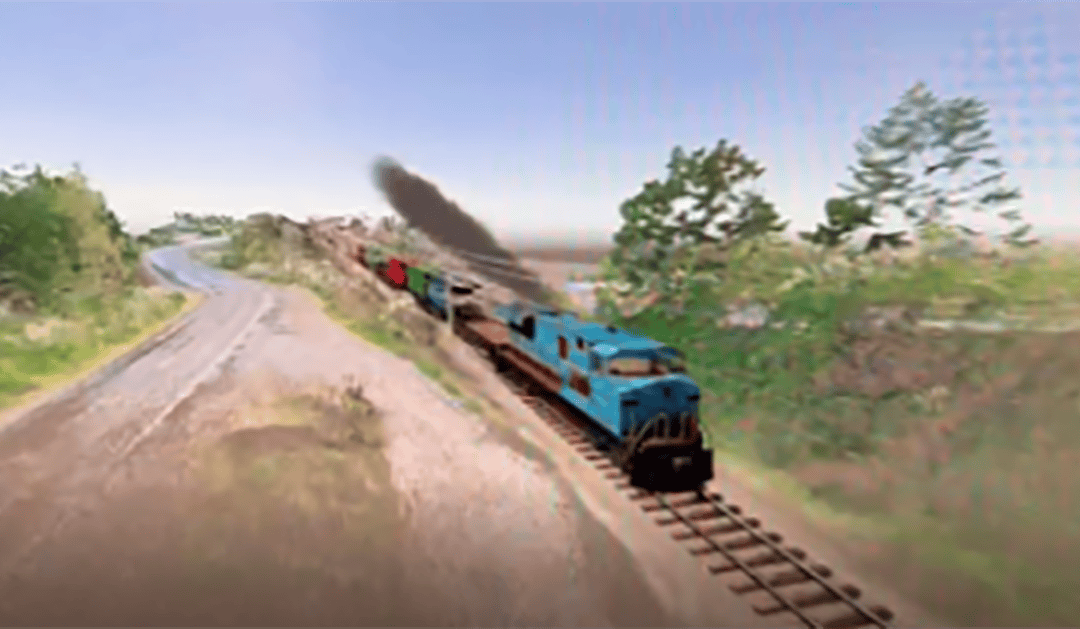
Halcombe, we have a digital twin
3 August 2023
On Tuesday 14 April 1970, astronauts on the spacecraft Apollo 13 let Houston know they had a problem.
An oxygen tank had exploded, and there was damage to the main engine. With the clock ticking, NASA employed multiple simulators to see what had caused the failure. Back on Earth, the astronauts had trained for their mission in a physical model of the spacecraft they were now in. NASA extended this model to include digital components, which meant they could import and analyse data from space to see what had caused the explosion, and explore scenarios that could get the crew safely back home.
This was the first digital twin. A digital twin is a virtual representation of a product, system or process, and they are now commonplace. Digital twins allow manufacturers to optimise their production processes, hospitals to complete more surgeries, and commuters to find the best way home during rush hour.
Half a century later, in Aotearoa New Zealand, the digital twins approach pioneered by NASA is now making an autonomous shuttle between Marton and Feilding possible for Ngā Iwi o Te Reureu.
Graeme Everton, the project manager for Māori economic development agency Reureu Kotahitanga Ltd, wants to improve connectivity for Ngā Iwi o Te Reureu. Graeme approached Atawhai Tibble from Te Pūnaha Matatini’s advisory board about using digital twins to develop and validate his plan for an autonomous shuttle running on rail tracks between Marton and Feilding.
Associate Professor Mike O’Sullivan, deputy director of Te Pūnaha Matatini, has worked with digital twins in healthcare. He brought Dr Yang Zou from the University of Auckland on board to use light detection and ranging (LiDAR) to scan the rail track and convert it into a 3D model. In partnership with Ryan Curry from KiwiRail and Gordon Lyall from iLinks, Graeme and Yang have now successfully captured the first six kilometres of rail track between Te Reureu Valley and Halcombe.
The next step is to add a realistic model of an autonomous rail shuttle to the digital twin and implement a control system for how the shuttle would operate in practice. Once the digital twin of the track between Te Reureu and Halcombe has been validated and de-risked, a second capture will be done between Marton and Feilding.
This combined data will provide a digital twin to test and showcase a fully autonomous rail service on the network. Graeme can use this digital twin to support the business case for the real-world infrastructure necessary to have an autonomous rail service running between Marton and Feilding by 2027.
The approach pioneered by Graeme, Yang and the rest of the team can also be extended across Aotearoa New Zealand’s entire rail system to provide a digital twin for evaluation, management and innovation into the future.
This work was funded and supported by Waka Kotahi through the Hoe ki angitū – Innovation Fund.
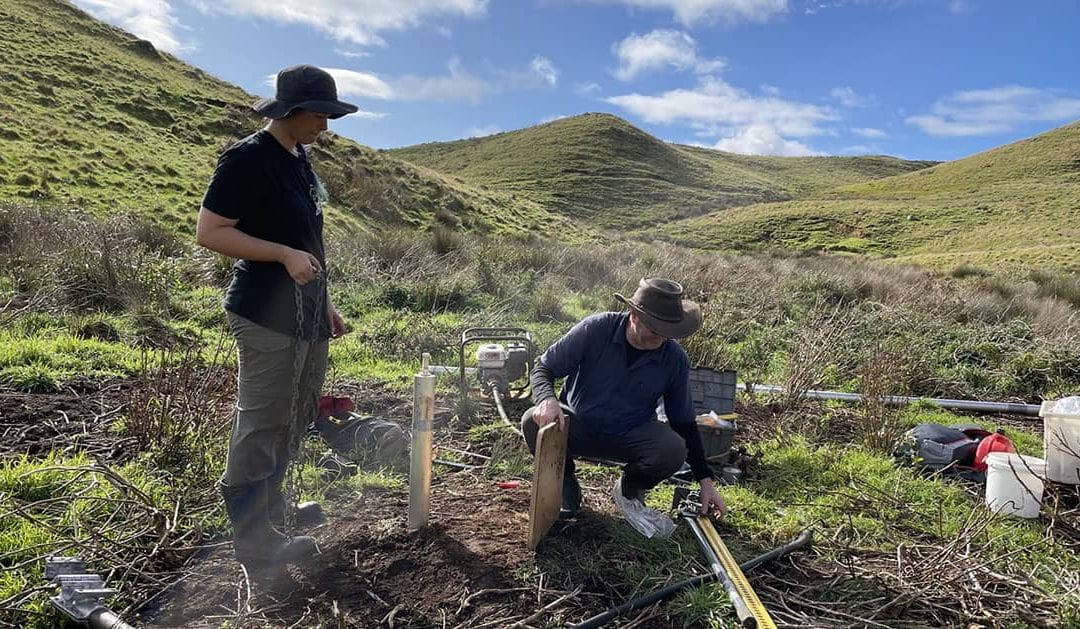
Environmental engineering in early taro and kūmara cultivation
1 August 2023
Field work is archaeologist Alex Queenin’s happy place. At the moment, she’s finding that happy place on Ahuahu Great Mercury Island, an island off the west coast of Coromandel.
An archaeological investigation has been running on Ahuahu since 2011, exploring some of the earliest sites of human habitation in Aotearoa New Zealand. A group of Te Pūnaha Matatini investigators are working with data from these sites to explore how Māori learned to live in Aotearoa after their arrival from Polynesia.
For her Te Pūnaha Matatini-funded PhD project, Alex is working to reconstruct human-environment interactions on Ahuahu. She is looking at how paleoenvironmental evidence can inform archaeological interpretations of both settlement and horticulture by studying sediment from the island.
On Ahuahu, she is collecting and analysing sediment cores from catchments adjacent to archaeological sites. Alex uses geochemical techniques like x-ray fluorescence and physical techniques like magnetic susceptibility to understand more about human activity on the island.
“You don’t always get all the information from the archaeological sites,” explains Alex. “For example, when people first got to Aotearoa from Polynesia, you get a bit of initial occupation at archaeological sites and then generally a burn off of the forest to start agriculture. This created charcoal that was mixed into soils to grow taro and kūmara.”
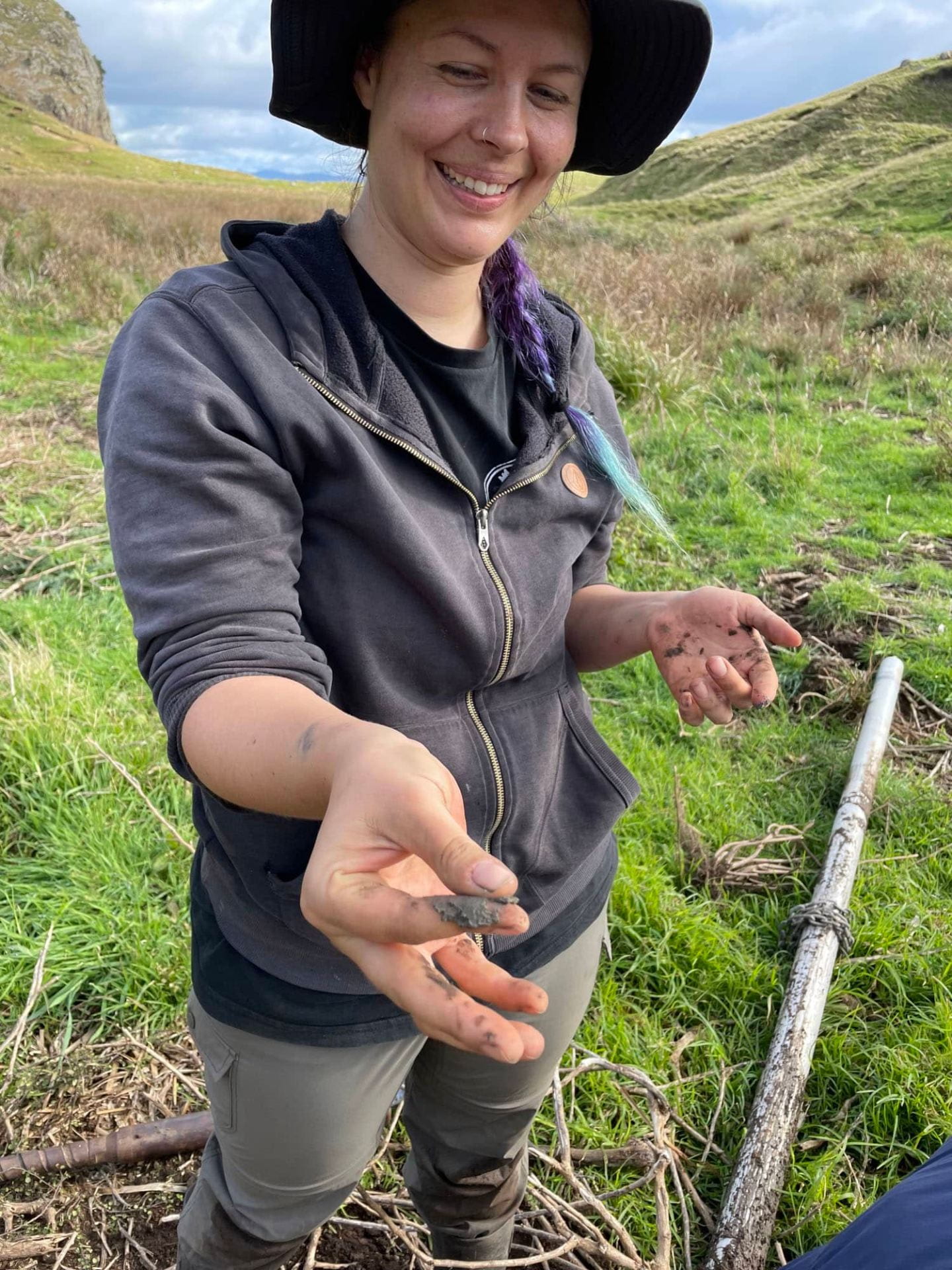 “Not a lot of that evidence survives in archaeological sites, but you get big sediment deposits in adjacent catchments after the burn off.” This is proxy evidence of human behaviour. “Because the forest cover has been removed, you’ll then get detrital indicators showing that soils started to erode a lot quicker after the burn off.”
“Not a lot of that evidence survives in archaeological sites, but you get big sediment deposits in adjacent catchments after the burn off.” This is proxy evidence of human behaviour. “Because the forest cover has been removed, you’ll then get detrital indicators showing that soils started to erode a lot quicker after the burn off.”
Evidence like this allows archaeologists to understand more about interactions between humans and the environment. “People had to do some very specific environmental engineering to make horticulture work on these islands,” says Alex. “Especially on Ahuahu, where the main bedrock is rhyolite, which is not great for gardening. Early Māori had to make suitable soils for gardening by incorporating things like charcoal and shells.”
This is known as niche construction, where the intentional and unintentional actions of people result in positive or negative environmental outcomes.
Alex’s work is part of the Te Pūnaha Matatini core project on kaitiakitanga and the ecodynamics of Māori horticulture, led by Principal Investigator Thegn Ladefoged. This project draws on the strength of Te Pūnaha Matatini’s interdisciplinary approach, with archaeologists collaborating with soil scientists, mātauranga Māori experts, and mathematical modellers to better understand the long-term dynamics of complex human-environment interactions through the lens of Aotearoa’s first people.
For Alex, working with experts from different disciplines creates a much more detailed understanding of archaeological sites. Archaeology is an interpretive discipline, and using modelling and different lines of multi-proxy evidence creates different ways of looking at the landscape, strengthening confidence in its interpretations.
Before starting her PhD, Alex was working as a contract archaeologist in cultural resource management. She says that working as a contract archaeologist around the North Island was hard work, but a fulfilling job. “You get to meet a lot of great people, and learn a lot of cool stuff – especially from kaitiaki.”
Even though the field is her happy place, Alex still loves lab work. In the future, she hopes to start her own lab for doing multiproxy analysis in conjuction with people doing archaeological work. But for now she has to focus on getting the balance right for her PhD. “I have to make sure to not stay in the lab all the time,” she says. “I need to do some writing, too.”
Kaitiakitanga and the ecodynamics of early Māori horticulture
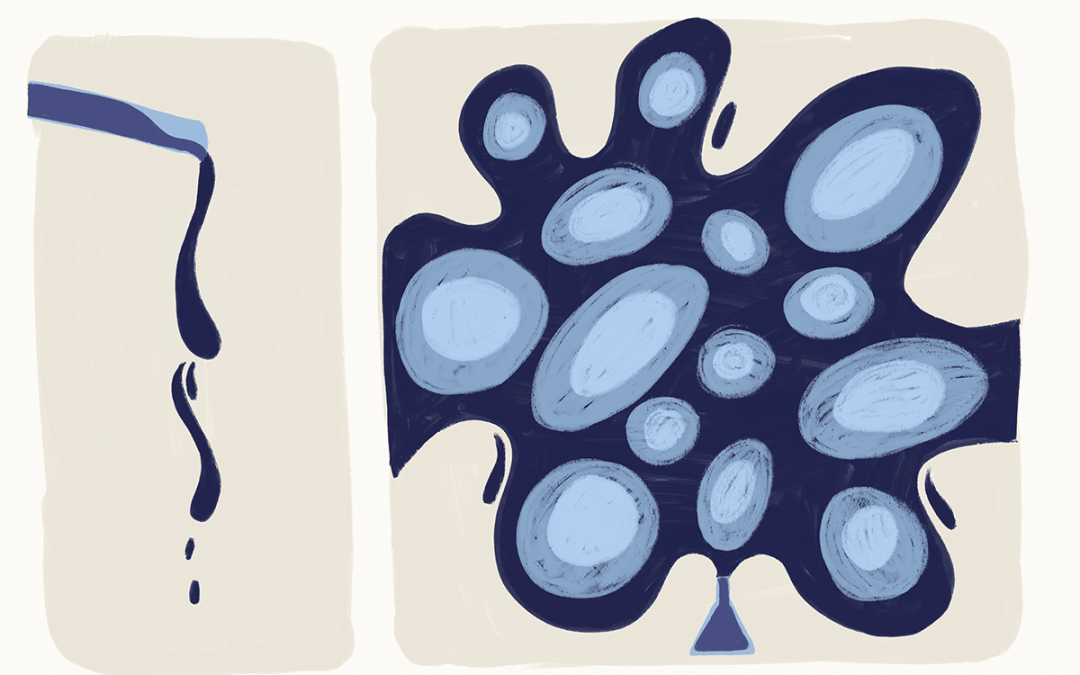
Everything is information
3 July 2023
A collaboration between scientist Markus Luczak-Roesch and illustrator Jean Donaldson. Edited by Jonathan Burgess.
In 1975, a student working in Japan made a mistake. They misunderstood some instructions in Japanese and added 1,000 times more of a substance to a chemical reaction than they were supposed to.
The chemical reaction created a silvery plastic. When New Zealand-born scientist Alan MacDiarmid visited Japan and saw this silvery plastic, he recognised the potential of its remarkable properties. He worked on this new material alongside Hideki Shirakawa and Alan Heeger, and they created plastics that could conduct electricity.
MacDiarmid and his collaborators were awarded a Nobel Prize for this work, the third Nobel Prize ever awarded to a New Zealander. Conductive plastics now underpin most of our lives through their use in smartphone screens and solar panels.
What creates Nobel Prize winning ideas? Is it the right people being in the right place at the right time? Is it what these people say or do? Or do ideas just appear out of nowhere? Many people will say intuition, serendipity or coincidence may often be at play. Was it the way the instructions were given to the student that led to this fortunate mistake? Was it the student’s language barrier? Was it MacDiarmid’s ability to recognise the significance of this mistake? Or was it the unique composition of all of those things?
Amongst all the random occurrences in the world, do certain ones have a lasting impact? To try and answer this question, I have a suggestion to make: Everything is information.
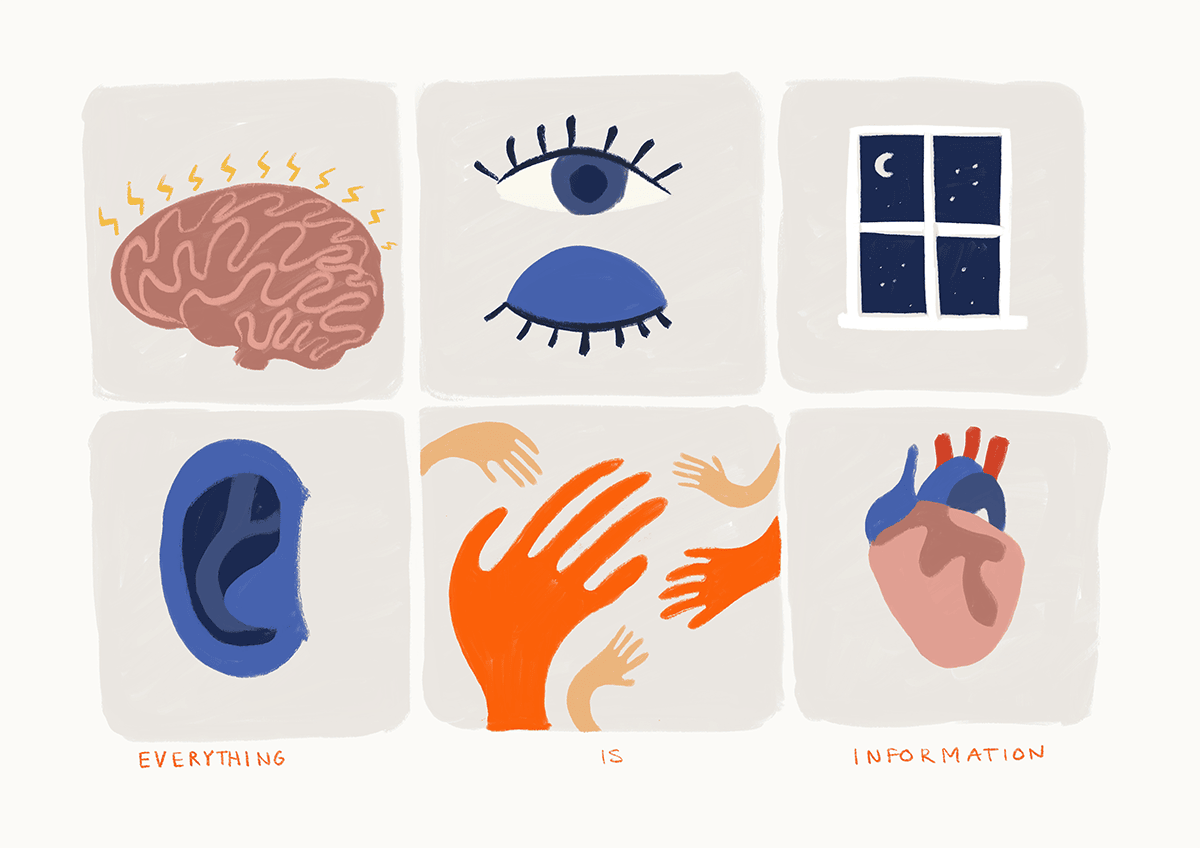
Consider something as common and seemingly simple as MacDiarmid and his research team having a chat about an experiment they want to perform in the lab the next day. There are a lot of things going on:
- The words that are said
- Brain waves as sensory input is processed
- Body temperature
- Heart rate
- Frequency of eye moment
Over the course of the conversation all of these signals will continuously change. Some more or less than others. If we record them all we could get a very detailed landscape of information about their chat, and hopefully capture the coincidence that led to their groundbreaking discovery.
But studying what a human says over a time period is very different from studying their brain waves over the same period, for example. We’re dealing with apples and oranges to understand the full picture of this situation. The apples here being the words someone says, the oranges being the electrical activity in people’s brains.
We’re working on how we can map all these different signals to a specific type of mathematical object, namely a network. If we combine the many networks we construct from the different signals, we get something that you can think of as a cube. A cube of all the information from the whole variety of sources that were observed over a time period. Within this cube we can then search for structures that represent meaningful coincidences — because if these structures weren’t present the cube would fall apart or change shape.
This may sound rather complicated. So, let’s explore baking a cake. When baking a cake you combine all sorts of different ingredients that come in different forms like milk, sugar, and eggs. Mixed together and baked, the result is a tasty cake. But if you leave one of those ingredients out, you end up with a hot mess that won’t hold its shape. This roughly describes what we are dealing with here on a mathematical level.
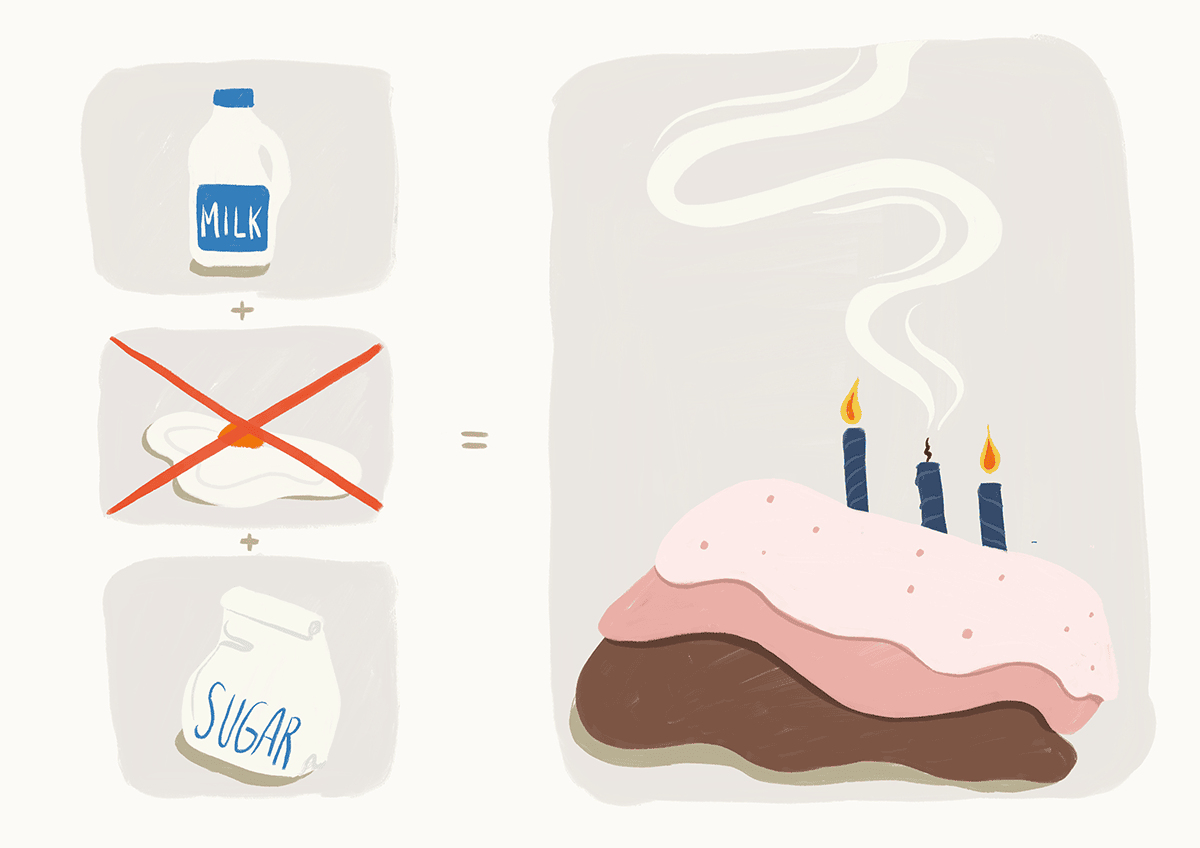
We weren’t there to monitor MacDiarmid and his team having a chat before their discovery, but we do want to study human conversations in this way. We can also use this method to uncover patterns in complex data to better understand things like climate science, genomics, humanities, psychology and neuroscience.
Let’s connect what we just described to the present moment. You’re currently reading this blog post, which is — within the grand scheme of your lifetime — a tiny, statistically insignificant event. But at this very moment there may be something in your mind or your body’s response that may later trigger a thought. This could be minutes later, months later or even years later.
With our methods we want to make it possible to capture the holistic complexity of this moment and link it to related information in the past and in the future, to understand which indispensable ingredients are key in the baking of your life.
Do you think reading this was one of them?
Find out more about Transcendental Information Cascades
Markus Luczak-Roesch is a Principal Investigator with Te Pūnaha Matatini who brings unique computational approaches to collaborative teams to generate new insights into complexity and contribute to our understanding of emergence.
Jean Donaldson is a designer and native bird fanatic based in Te Whanganui-a-Tara. You can see more of her work at https://jeanmanudesign.com/.
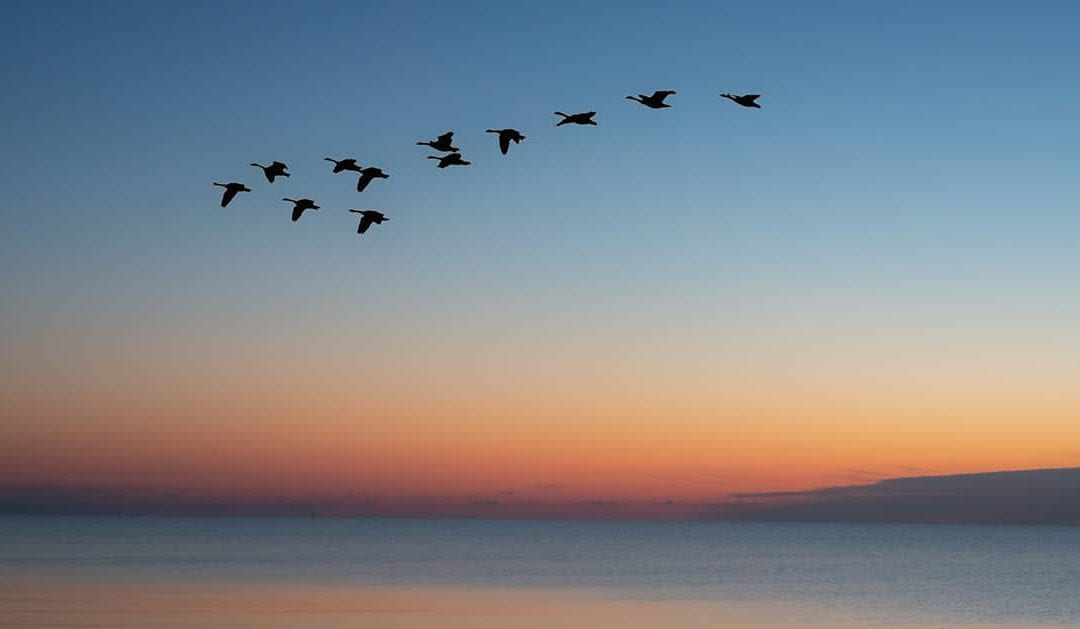
Building a just research system, together
9 June 2023
The global research system is in crisis. One way that we are seeing this unfold is in large-scale planned redundancies at our universities in Aotearoa New Zealand.
But the research system isn’t broken, it was built this way.
The design of the research system promotes individualism, hypercompetitiveness and productivism. The opportunity to succeed is not equally shared, and people who are structurally and socially advantaged tend to remain privileged in the system.
New research from an interdisciplinary team at Te Pūnaha Matatini states that we need systematic, collaborative and whole-of-community action to build a more just research system. This has just been published in Nature Human Behaviour.
Lead author Dr Aisling Rayne explains that “we need to build a research system which demonstrates a relational duty of care to all its participants — including those on the margins, in precarious positions and in support roles.”
“To be responsive to the critical challenges of our time, the global science community needs to travel forward in a shared and purposeful direction — one that moves us closer to a better, more just society,” say the authors.
“We challenge the science community to harness the processes of complexity with intent and urgency to build a science system that is prepared to address the complex global challenges in which we all have a stake.”
This challenge is fully supported by Te Pūnaha Matatini, the Aotearoa New Zealand Centre of Research Excellence for complex systems. “We at Te Pūnaha Matatini support systemic transformation of the science system, and the centering of collaborative and ethical research,” says Te Pūnaha Matatini Director, Associate Professor Cilla Wehi. “The kind of transformations outlined here will act to support researchers and grow the best possible work on the pressing problems of our time.”
“There’s a growing evidence base that shows that our current research system is unjust and unsustainable,” continues Aisling.
Proposed solutions such as diversity, equity and inclusion initiatives can have unintended consequences, because they don’t take into account the complexity of the research system.
We need to embrace this complexity to make lasting systemic change. This means being reflective about the changes we make to avoid unintended consequences, and engaging the entire research community in building the system anew.
Aisling concludes that “the review of the research, science and innovation system that the Ministry of Business, Innovation and Employment is currently undertaking through Te Ara Paerangi is an opportunity for Aotearoa New Zealand to lead the way in changing how research is done.”
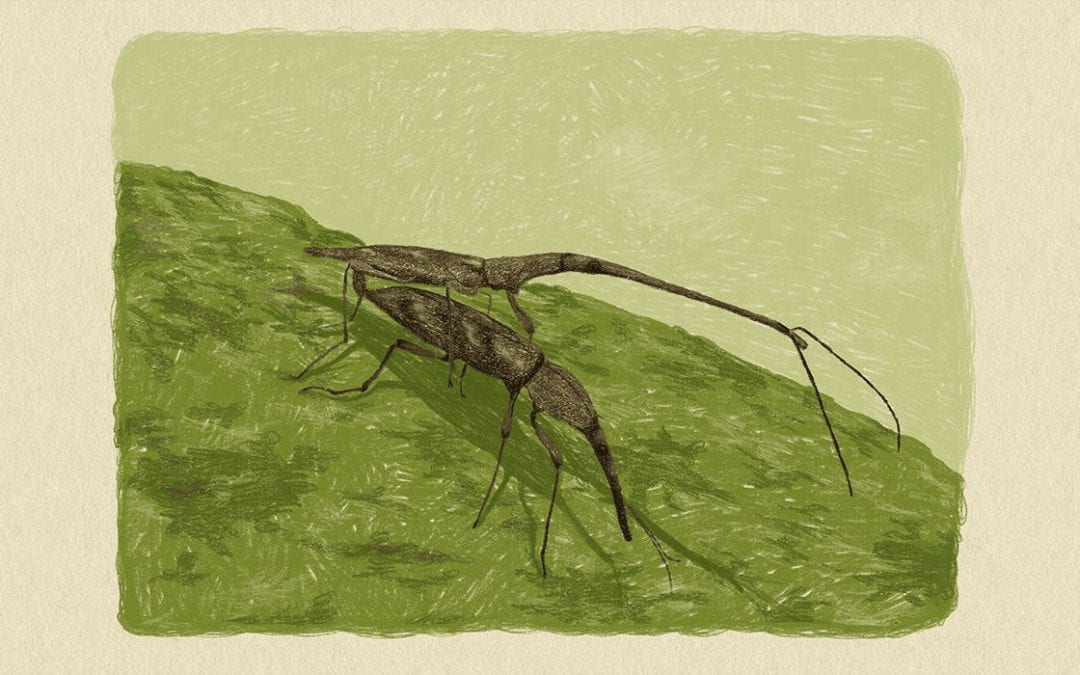
An egg the size of a fairy sprinkle
2 June 2023
A collaboration between scientist Chrissie Painting and illustrator Jean Donaldson. Edited by Anna Brown.
“Found some!” I let out a sigh of relief and turn towards my colleague’s voice coming somewhere from among a tangle of logs and vines. Above me a kākā whistles, but this charismatic clown is not who we’re here to see.
I climb awkwardly over a huge fallen tawa and find my co-researcher Ummat crouched down staring at a pair of pepeke nguturoa* (New Zealand giraffe weevils). The male giraffe weevil is about the length of a clothes peg, and he’s standing guard over a smaller female, who is painstakingly using her drill-shaped head to carve out a hole in the tree to safely deposit her egg.
We open our backpacks, grab our binoculars, notebooks, and stopwatches, and start watching the pair. It takes four hours, but the female eventually turns around and starts to lay her egg into the carefully prepared hole. During that time we watch three different males mating with her – our original friend who we met at the start of the day, as well as a tiny male about a fifth of his size, who creeps underneath the guarding male and sneakily mates with the female. The third male is so long he towers over both the other males.
All of these weevils are painted with little numbers that act as ID badges, their size measured and a bit of leg tissue clipped to use for DNA analysis. Only one of these males can father the single tiny egg that has been laid into the tree.
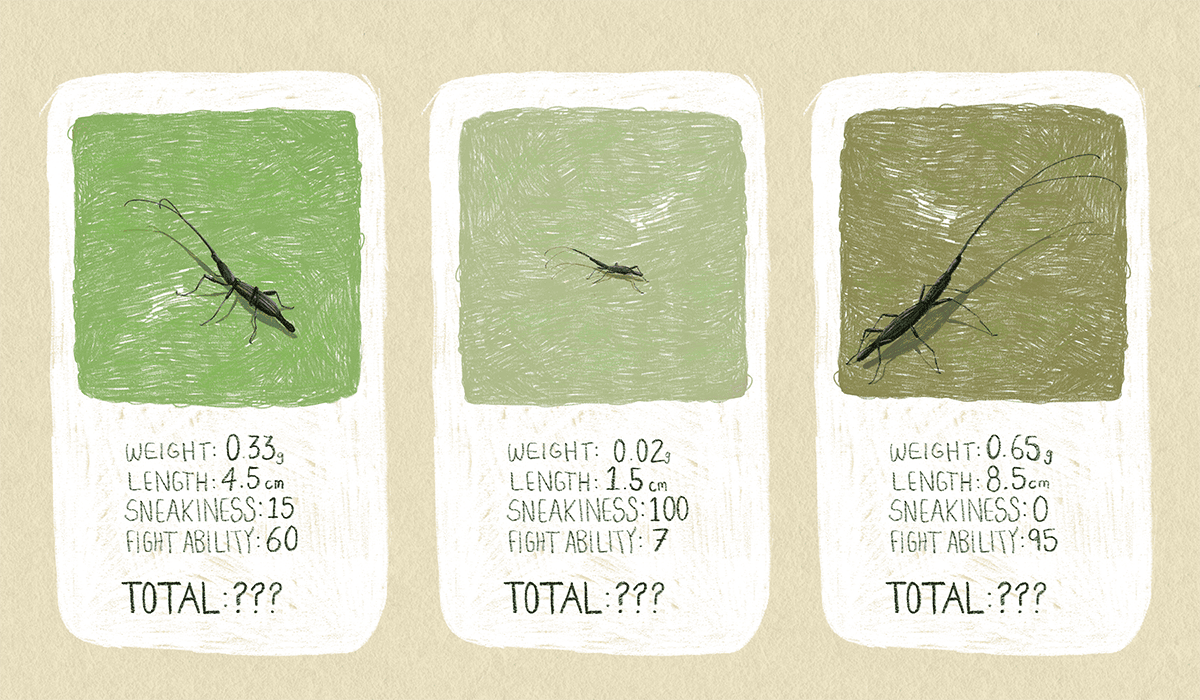
We are peeking at the sex lives of giraffe weevils to answer a question that has been rattling around in my brain for years. How does the potent force of competition to pass on genes shape an animal’s behaviour and appearance? Being bigger is partly the answer to being successful if you’re a giraffe weevil. Bigger males are more likely to win fights with competing males and get the chance to mate. Males use their ridiculously elongated head like a jousting pole to throw their opponent off the tree in an attempt to secure mating opportunities. Goofy, but effective.
However, getting to mate doesn’t necessarily mean getting to be a dad. Across animals, the majority of females mate with multiple males. Females often store sperm from these suitors in their reproductive tracts, where those sperm literally race to successfully fertilise an egg. The result is an astonishing array of adaptations that evolve as a response to this secretive competition that continues after mating.
Sperm competition is like entering a lottery – the more tickets (sperm) you buy, the more chances you have to win (fertilisation). In deer mice, sperm clumps together to form a cooperative bundle that races towards the egg, male damselflies have spoon-like penises that scrape out the sperm from a female’s previous rendezvous, and male scorpionflies can assess how much sperm a female is storing and adjust their ejaculate size in response.
Back in the bush, we are watching our female rock her body back and forth, scraping microscopic bits of bark to plug the hole where she’s laid her egg, making it invisible to onlookers. Neither of us speaks, as this part of the observation is crucial – we need to pinpoint the exact spot that the female has laid her egg. I’m drawing a map in my mind: one centimetre from the lightning-shaped crack, just below the bubbly lichen and between those two black specks. I reach tentatively across to the tree, draw a bright red dot on top of the covered hole and then glue a bottle cap over it. A week later we return to the tree and carefully extract the egg using wood-carving tools and all the patience we can muster.
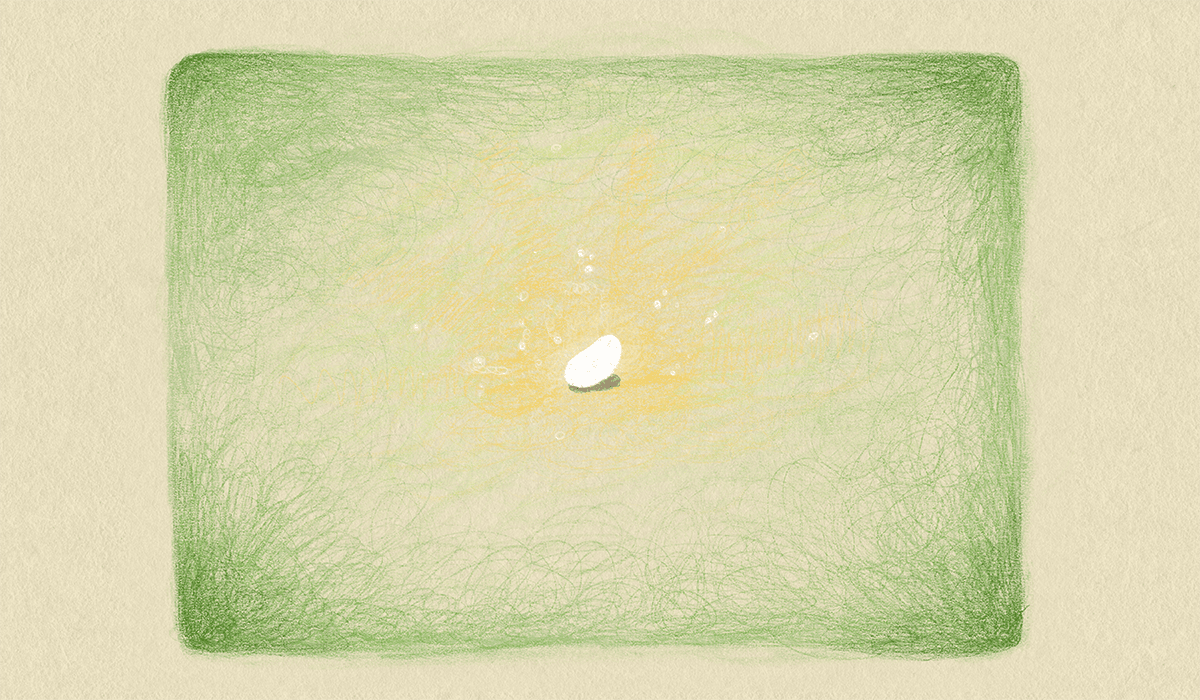
Once plucked out, the egg is the size of a fairy sprinkle. This precious packet contains answers to our mystery. DNA genotyping will reveal the father, and which aspects of his biology make him successful. Is it the length of his weapon? The order in which he mated? Or maybe it’s how long he got to mate for.
We will watch many more episodes of this epic sex saga. Combined, these observations will reveal the intricate secrets of giraffe weevil mating behaviour, and ultimately, tell us a little bit more about how evolution is responsible for driving diversity in Earth’s creatures.
*I’ve not been able to find much information about the Māori names for the giraffe weevil but pepeke nguturoa loosely translates to ‘long-beaked beetle/insect’, in reference to the male’s elongated rostrum. Giraffe weevils are also known as tūwhaipapa and tūwhaitara, which is said to refer to the atua of newly made canoes and alludes to the beetle’s long canoe-like body. The giraffe weevil’s scientific name Lasiorhynchus barbicornis also has an interesting etymology, with ‘lasios’ meaning densely hairy, ‘rhynchos’ meaning proboscis, ‘barbi’ meaning beard and ‘corni’ meaning horn. That means both the genus and species name are referring to the male’s super hairy moustache that runs along the underside of its rostrum!
Chrissie Painting is a Principal Investigator with Te Pūnaha Matatini, with a particular fascination for insect mating systems and a passion for raising the awareness of the littlest creatures of Aotearoa.
Jean Donaldson is a designer and native bird fanatic based in Te Whanganui-a-Tara. You can see more of her work at https://jeanmanudesign.com/.
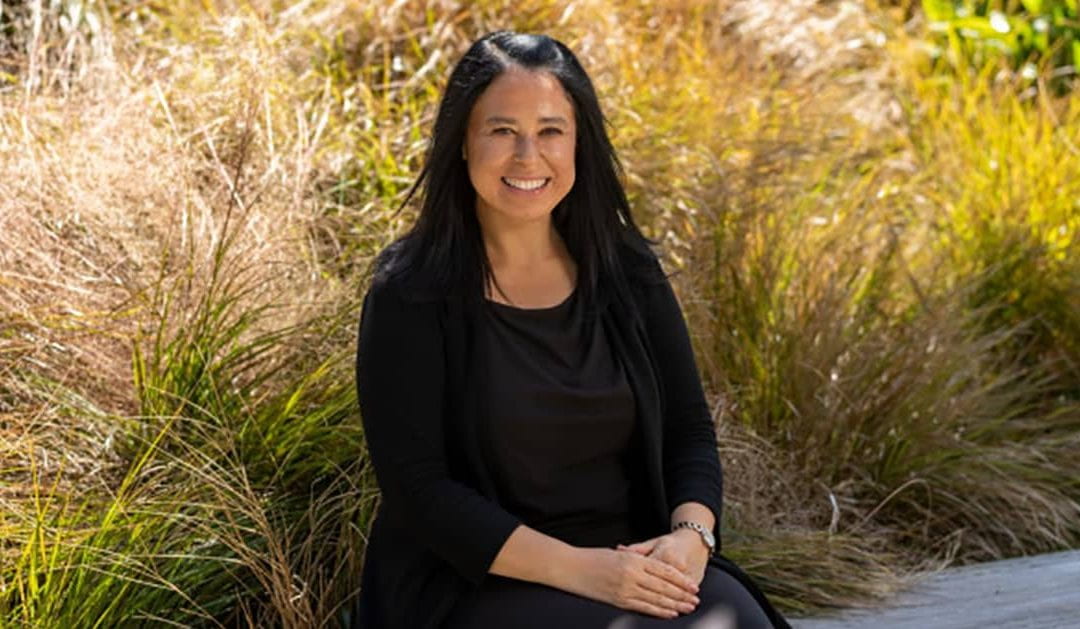
Two Te Pūnaha Matatini investigators win Prime Minister’s Science Prizes
Image: Te Pūnaha Matatini Principal Investigator Dianne Sika-Paotonu has won Te Puiaki Whakapā Pūtaiao the Prime Minister’s Science Communication Prize.
2 May 2023
Two Te Pūnaha Matatini principal investigators have been recognised in the 2022 Prime Minister’s Science Prizes, announced at an event in Te Whanganui-a-tara Wellington on Monday 1 May 2023.
Associate Professor Dianne Sika-Paotonu won Te Puiaki Whakapā Pūtaiao the Science Communication Prize, and Associate Professor Jonathan Tonkin won Te Puiaki Kaipūtaiao Maea the MacDiarmid Emerging Scientist Prize.
Dianne and Jono both represent the new sort of scientist that Te Pūnaha Matatini trains for the benefit of Aotearoa New Zealand, skilled in working with complexity and communicating the results in a clear, helpful, and timely way.
Dianne received the communication prize for her evidence-based science communication. She is a leading voice during the Covid-19 pandemic, explaining the technical aspects of immunology, vaccines, the SARS-CoV-2 virus and infectious diseases, giving more than 220 broadcast media interviews, and contributing to more than 1500 online and print media stories.
Dianne joined Te Pūnaha Matatini’s community as part of our intake of 34 new principal investigators in March 2023. “We are deeply privileged to have Dianne on board,” says Director Cilla Wehi. “She is an accomplished scientist who works closely with communities. Her work is timely and respectful, and helps communities that are frequently under-served to make sense of challenging data.”

Image: Te Pūnaha Matatini Principal Investigator Jonathan Tonkin has won Te Puiaki Kaipūtaiao Maea the MacDiarmid Emerging Scientist Prize.
Jono received his award for his work to turn ecology into a more predictive science. Ecosystems are notoriously hard to predict because of all the moving parts, and his team seeks to find new ways to overcome the challenges associated with the natural complexity of ecosystems.
“Jono is a longstanding Te Pūnaha Matatini principal investigator and leads one of our core research projects,” says Cilla. “His locally-responsive work applies world-leading methods to develop radically new approaches that will help protect our rivers and lakes for the future.”
As river ecosystems continue to degrade under pressures of increasing human demand and global change, sustaining them is imperative. “It’s fundamentally important to do what we can to mitigate the risks that ecosystems face,” says Jono. “Because naturally functioning ecosystems provide us with clean water for drinking, food, medicine and so on.”
For Jono, this work is personal. He was initially inspired to study ecology through his love of spending time in rivers when growing up.
“I’m thrilled that the mahi of these two excellent researchers has been recognised with these prizes,” says Cilla. “He mihi nui ki a kōrua. Huge congratulations on behalf of the whole Te Pūnaha Matatini community.”
2022 Prime Minister’s Science Prizes – Royal Society Te Apārangi
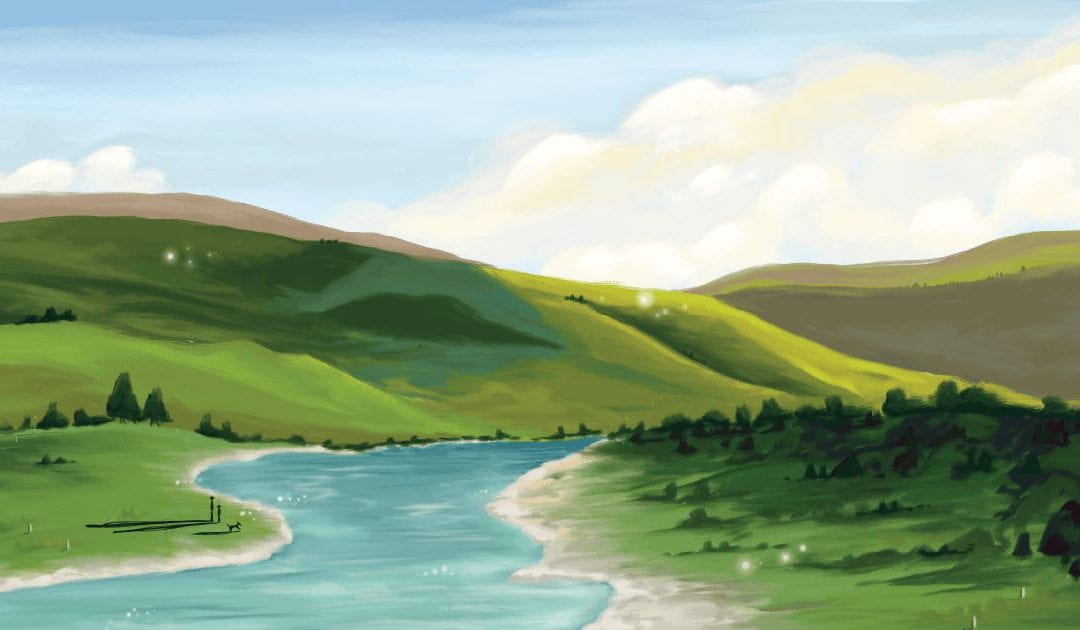
Do we build the dam?
1 May 2023
A collaboration between research assistant Claire Grant and illustrator Jean Donaldson. Edited by Jonathan Burgess.
“Right, let’s go Pup!” Dad sing-songs to our dog Blue as she bounces from left to right, bow-wowing at the top of her lungs. She’s just as excited about going hunting as we are. We’ve been through our list: boots – check, keys – check, rifle – check, but we’ve probably forgotten something important, as Mum likes to point out. Up goes the screechy roller door and we’re finally on our way.
Driving across the bridge we both look west, our eyes following the Waipawa river up to the Ruahine and Wakarara Ranges. “Oh yeah, not looking too bad aye,” I say in my blokiest voice as the blue-green mountains lean over us, silhouetted by clear skies. “Oh mate,” Dad replies. The Waipawa river leads the way for the first half of the drive, before it splits in two and the Makaroro takes over as our guide.
As we drive alongside the rivers, Dad and I reminisce, “Remember when we used to float down the river all the way from the Waipawa Bridge out to Patangata at the start of summer?”
“Yeah that was fun as. But we had to walk half the way because the river was so low.”
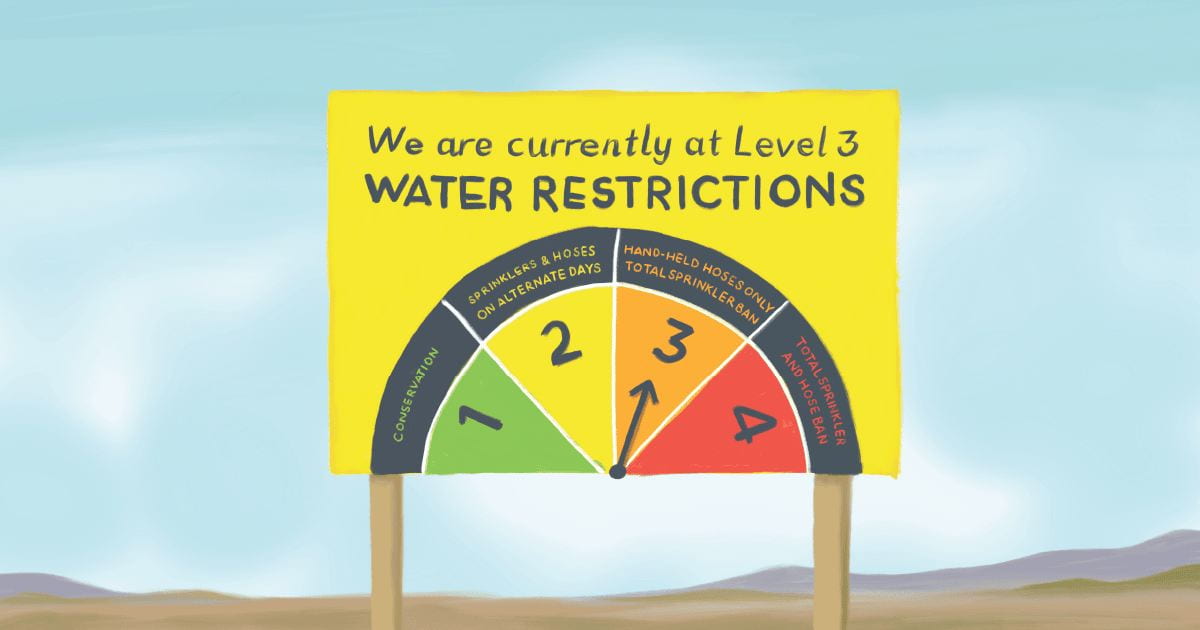
We’re halfway there when we have to stop and wait for a column of dairy cows to cross the road, udders swollen and swaying. We give the cows voices and personalities. Betsy’s a complainer, “Walking, walking and more walking” she says in a disgruntled drawl. And here comes the farmer, Trev, on his quad. Good bloke.
The road crinkles as the land compresses and the foothills emerge from the plains. We round a bend and the mountains fill the sky. Sweeping down the hillside to the Makaroro’s edge I wind down my window and breathe in the scent of toasted grass, while doing my best to feel the spirit of this place with the intensity I felt as a kid. It’s friendly yet ominous, inviting yet threatening.
Here is where the Makaroro begins its journey towards the pasture-land of Central Hawke’s Bay. It’s the same place I have returned to throughout my life, and each time it’s almost exactly as I remember it. It fills my soul to be here, to return home.
But this is the proposed site for the Ruataniwha dam.
*****
Droughts and dry spells have plagued Central Hawke’s Bay over the past several years, and climate change has pushed water security to the top of the list of local issues. The ecological health of the Tukituki catchment, within which the Waipawa and Makaroro rivers lie, is a major concern, though it is constantly vying for attention against agricultural irrigation demands.
With less water flowing in the rivers the concentration of pollutants increases, and ecological issues such as toxic algal blooms arise. The proposed Ruataniwha Dam was supposed to be Hawke’s Bay Regional Council’s silver bullet solution to support freshwater ecosystems and provide secure water for irrigation.
The council’s approach is an example of top-down environmental management. Top-down management tends towards the view that technology can provide environmental salvation and that systemic changes are unnecessary. When viewed in this way, the best solutions are those which are quick, cheap, and cause the least amount of social disruption. Through this lens, a dam is a logical solution.
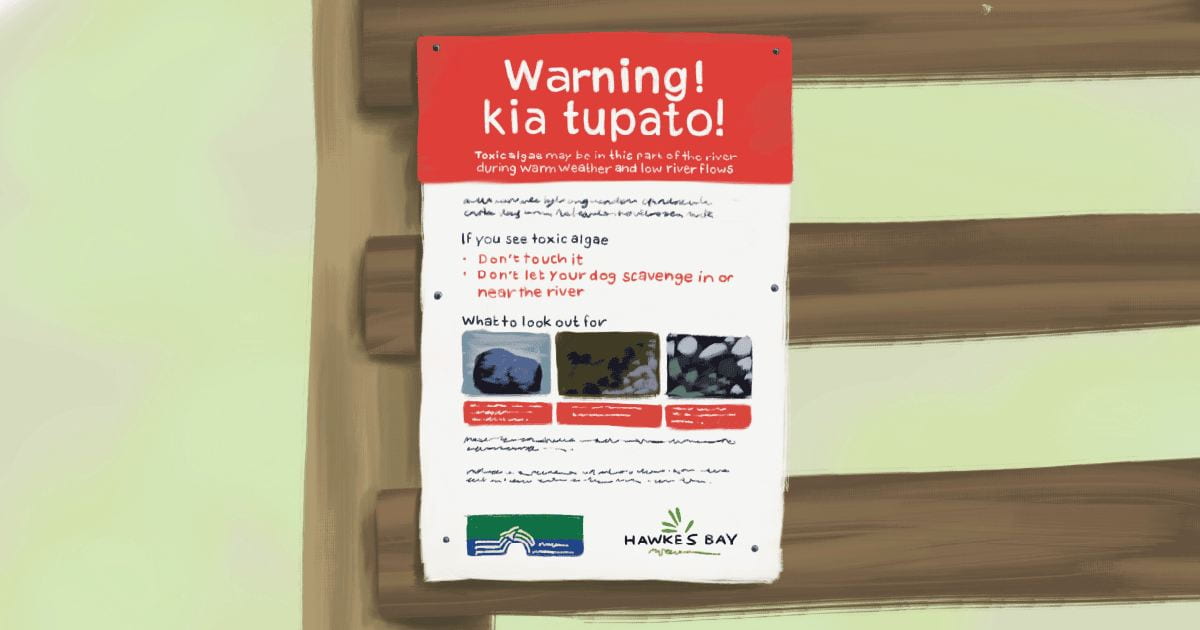
This reliance on technology reflects only one of the wide range of worldviews that exist within communities. Take my position in the Ruataniwha Dam debate as an example. I am connected with the Makaroro river in a way which makes it more than just a resource. It is a lifetime of memories. It is a being with a spirit. It is so much more than a feasible site for water storage infrastructure. From my view, a dam is not an option.
My view is an example of a bottom-up environmental approach. Bottom-up approaches tend to be built on an holistic foundation. The environment is not viewed as an object apart from humanity, which exists only as a resource for economic gain.
Taking a bottom-up approach leads to very different solutions to environmental issues. Perhaps we should diversify our economy to increase resilience, or perhaps we need to build stronger relationships between people and their freshwater ecosystems to encourage responsible use. Such solutions are not quick or cheap. They are complex, and they certainly don’t avoid social disruption. They recognise the diversity of understandings and potential solutions that don’t fit within a top-down view.
There is rarely a perfect solution to environmental problems, whether it’s water scarcity in Central Hawke’s Bay, deforestation in the Amazon, or overfishing in the Southern Ocean. But ultimately we all want our communities to live prosperously in healthy environments for generations to come. When different ideas about what should be done about environmental issues clash and bring each other to a stand still, what do we do? The problems still exist and we need to do something.
So, do we build the dam, or do we not?
Claire Grant has been exploring top-down and bottom-up approaches as a research assistant on Te Pūnaha Matatini’s Ki te toi o te ora: System change to reverse health inequality and environmental degradation project.
Jean Donaldson is a designer and native bird fanatic based in Te Whanganui-a-Tara. You can see more of her work at https://jeanmanudesign.com/.
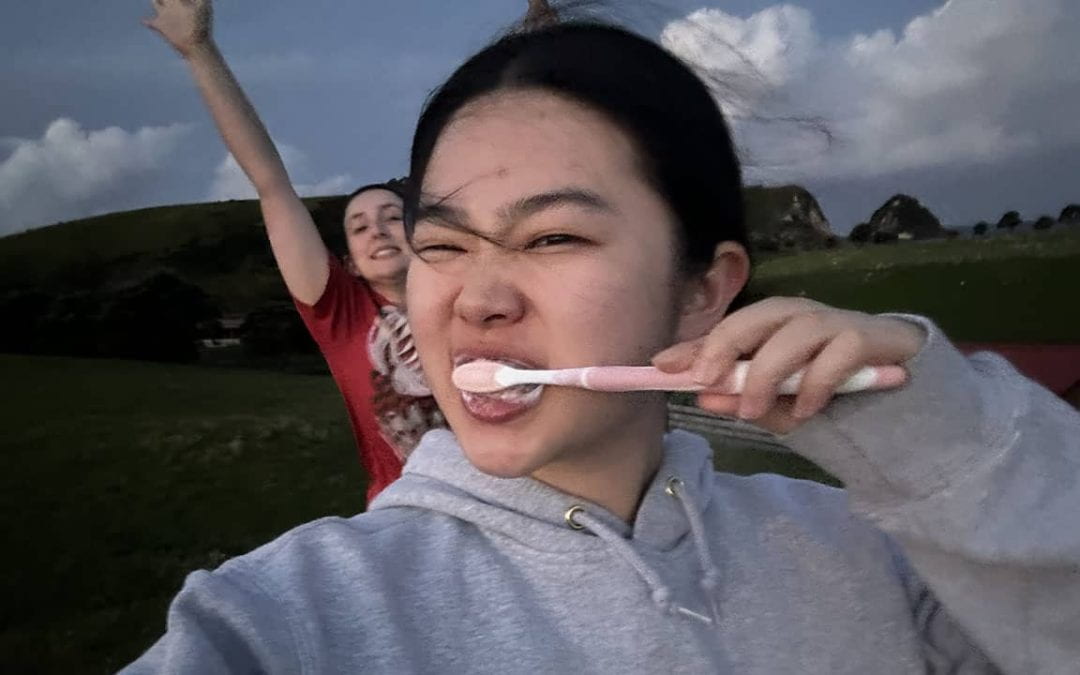
Te Pūnaha Matatini supports summer interns
Image: Rachel Liu (front) and Anya Christiansen undertook archaeological field work on Ahuahu Great Mercury Island as part of their summer internship.
2 March 2023
It’s lucky that Jed Thompson-Fawcett’s summer internship supervisor didn’t tell him how much the equipment he was working was worth before she let him do an experiment with it.
Jed (Ngāti Whātua) was one of 13 interns supported by Te Pūnaha Matatini over the 2022-23 summer, on projects ranging from natural language processing of te reo Māori and philopatry of seabirds through to defense behaviour of wētā and obsidian hydration dating.
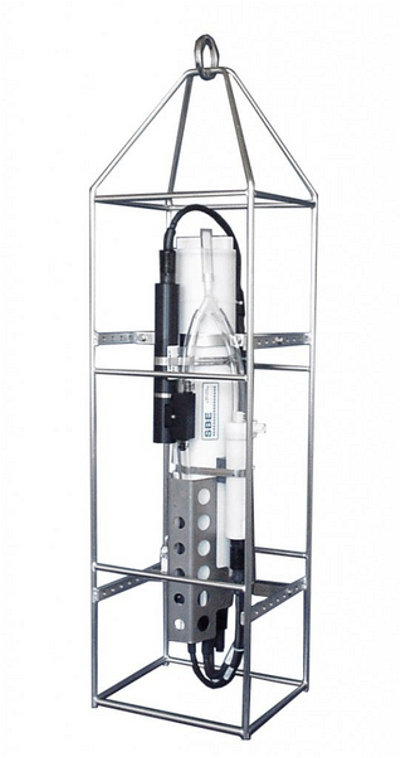
The SBE 19plus V2 SeaCAT is delicate and expensive.
Jed was working with Te Pūnaha Matatini Principal Investigator Inga Smith to compare measurements between two conductivity, temperature and depth (CTD) instruments in supercooled water. These measurements are important for our understanding of sea ice, which influences the global climate.
The majority of Jed’s work was analysing data collected on the instruments by Inga and a small team in McMurdo sound, but she also let him have a go on one of the CTDs.
The SBE 19plus V2 SeaCAT has a glass conductivity cell with electrodes throughout it. It’s delicate and expensive. “I’m very glad that Inga didn’t tell me how much it cost,” says Jed. “I wouldn’t have done the experiment if I knew!”
Rachel Liu and Anya Christiansen used more robust equipment for their archaeological field work on Ahuahu Great Mercury Island, working with Te Pūnaha Matatini PhD student Alex Queenin. They got a lot of hands-on experience with vibracoring and surveying. And although they had to haul the surveying equipment up and down a steep hill about 50 times, they both enjoyed the experience.
Alana Rodrigues-Birch also spent the summer on an archaeological internship, but “instead of being out in the field and having lots of nice times dragging stuff around up and down hills, I was in a lab.”
Alana used obsidian hydration dating to investigate when obsidian artifacts found on Tūhua Mayor Island were made. This was to help to create schematics showing trade networks between different groups of Māori.
“I realised I actually really like being locked in a lab all summer,” says Alana. “Archaeology is often represented as being a very field-heavy discipline, but this experience showed me how the lab work is important as well.”
Te Pūnaha Matatini has a longstanding relationship with Te Hiku Media, and Alice Qin was under their wing as an intern this summer. She spent her time identifying misalignments in te reo Māori in Te Hiku’s natural language processing model Papa Reo. Alice is completing postgraduate study in statistics, specialising in machine learning, so this internship was a perfect fit for her.
As part of their internship, Luke Thompson and Hamish Doogan had the exciting opportunity to contribute to a research article on defensive behaviours in wētā that they plan to submit for a special issue of the New Zealand Journal of Zoology.
Toni Gordon produced a two-minute mixed-media video to help rangatahi understand eDNA, which will be hosted on the Science Learning Hub website under her creative name Iona Rachilde, and Brittany Bennenbroek will be publishing a visual timeline of policy events in Aotearoa New Zealand relevant to the Kindness in Science approach.
Te Pūnaha Matatini Deputy Director Mike O’Sullivan took charge of the internships this summer, and looked after the interns. They started with an induction, followed by two catch-ups and a concluding hui for everyone to share their mahi.
Ela Hunt worked on philopatry in seabirds, and said that she appreciated the chance to hear about the other projects and how everyone was doing. “Sometimes you can feel a little alone, or not know if your project is going the way it should be going,” she says. “It was a great opportunity to follow along and see how other people doing a similar kind of internship are finding things.”
Te Pūnaha Matatini Director Cilla Wehi loved the diversity of topics among our summer interns. “It reminds me of what we do at Te Pūnaha Matatini,” she says. “A bunch of mathematicians and physicists and computer scientists sitting in a room with historians and ecologists and science communicators.”
“This strange interdisciplinary space is where the best ideas come out, and it turns out it’s really important when we’re trying to solve these big problems like biodiversity loss, climate change, or thinking about health and how we can work to improve the lives of people in our society.”
“Our interns brought themselves to the work and made the projects interesting. They’ve all done an amazing job in such different ways, whether it’s sticking their hands into ice cold water, trying to draw eels peeing, grappling with the difficulties of how to define different terms, finding animals when it’s difficult, doing fieldwork or grappling with mathematical equations.”
“Their work is going to provide a great springboard for students in years to come.”
Te Pūnaha Matatini summer interns 2022-23
- Brittany Bennenbroek | Past policy changes and kindness in science | Office of the Prime Minister’s Chief Science Advisor / Kindness in Science
- Toni Gordon | Communicating eDNA | Cawthron Institute
- Alice Qin | Misalignments identification for te reo Māori | Te Hiku Media
- Sophie Doyle | Community attitudes and awareness toward pekapeka | Department of Conservation / University of Waikato
- Hamish Doogan | Defensive behaviours of wētā | University of Otago
- Luke Thompson | Defensive behaviours of wētā | University of Otago
- Anya Christiansen | Vibracoring, surveying and core analysis | University of Auckland
- Rachel Liu | Vibracoring, surveying and core analysis horticulture | University of Auckland
- Anne Matena | Modelling healthcare delivery | University of Auckland
- Alana Rodrigues-Birch | Obsidian hydration dating | University of Auckland
- Jed Thompson-Fawcett | Comparing measurements taken in supercooled water | University of Otago
- Ela Hunt | Philopatry and seabirds | University of Otago
- Daniel Reid | Better AI | University of Auckland
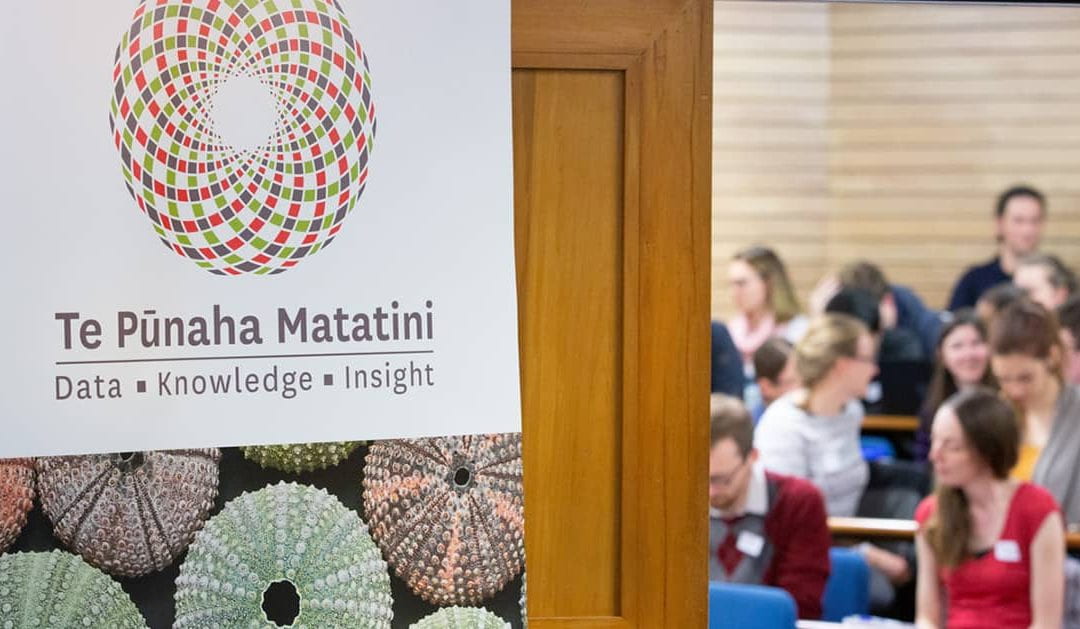
35 new investigators for Te Pūnaha Matatini
1 March 2023
E te pitomata o te rāngai rangahau matahou – Tēnā koutou – haere mai!
Koutou kua whaiwāhi ki waenga o ngā mātanga rangahau o Te Pūnaha Matatini – Tēna koutou – haere mai!
Koutou, te āhua nei, e whakapono nei ko Te Pūnaha Matatini tētehi huarahi whakaharahara hei whai mā koutou mō roro o ā koutou mahi rangahau – Tēnā koutou! Tēnā koutou! Tēnā koutou!
Nau mai! Piki mai! Haere mai!
Today we welcome 35 new principal investigators from across Aotearoa New Zealand to Te Pūnaha Matatini, the national Centre of Research Excellence for complex systems.
Kaumātua Professor Tom Roa extends “a very warm and hearty welcome to the potential in this group of researchers who have won places amongst Te Pūnaha Matatini’s very dedicated team.”
Te Pūnaha Matatini – literally ‘the meeting place of many faces’ – is a Tertiary Education Commission-funded CoRE with a focus on interdisciplinary and complex systems research. We develop approaches that enable better decision-making about Aotearoa New Zealand’s environment, economy and society.
These new principal investigators will be able to participate in Te Pūnaha Matatini’s research programmes, meetings and workshops, apply for funding, have a say in how we evolve, and contribute to meeting the strategic objectives of the CoRE. They will also be able to supervise Te Pūnaha Matatini PhD students, and bring their other PhD students and post-doctoral fellows into our emerging scientist network, TPM Whānau.
“Te Pūnaha Matatini’s world is opening up with the arrival of these new investigators,” says Director Associate Professor Cilla Wehi. “They’re bringing fresh ideas and they’re bringing new passion. It’s going to be really exciting to see what we can do together.”
“Every conversation I have with one of our new investigators gets me inspired.”
New Te Pūnaha Matatini investigators
- Associate Professor David Aguirre (Ngāti Kahungunu, Te Whānau-ā-Apanui, Ngāti Tuwharetoa), Massey University
- Dr Hitaua Arahanga-Doyle (Ngāi Tahu, Te Ati Haunui-a-Pāpārangi), University of Otago
- Dr Pete Russell (Ngāpuhi), University of Otago
- Dr Kelly Blincoe, Waipapa Taumata Rau – University of Auckland
- Dr Céline Cattoën-Gilbert, NIWA
- Justin Connolly (Waikato-Tainui), Deliberate
- Dr Mairéad de Róiste, Te Herenga Waka – Victoria University of Wellington
- Associate Professor Graham Donovan, Waipapa Taumata Rau – University of Auckland
- Dr Tom Etherington, Manaaki Whenua – Landcare Research
- Dr Peni Fukofuka, University of Canterbury
- Dr Gillian Gibb (Ngāti Mutunga), Massey University
- Professor Nick Golledge, Te Herenga Waka – Victoria University of Wellington
- Dr Gina Grimshaw, Te Herenga Waka – Victoria University of Wellington
- Dr Kyle Higham, Motu Research
- Mckayla Holloway (Ngāi Tahu), Cawthron Institute
- Professor Jodie Hunter, Massey University
- Associate Professor Libby Liggins, Massey University
- Dr Catriona MacLeod, Manaaki Whenua – Landcare Research
- Associate Professor Alex Macmillan, University of Otago
- Dr Zac McIvor (Te Patupō), University of Otago
- Dr Sereana Naepi, Waipapa Taumata Rau – University of Auckland
- Dr Lisa Pilkington, Waipapa Taumata Rau – University of Auckland
- Dr Matt Pinkerton, NIWA
- Associate Professor Anna Santure, Waipapa Taumata Rau – University of Auckland
- Associate Professor Dianne Sika-Paotonu, University of Otago
- Dr Simon Stewart (Ngāti Kahungunu ki Wairoa), Cawthron Institute
- Associate Professor Daniel Stouffer, University of Canterbury
- Dr Priya Subramanian, Waipapa Taumata Rau – University of Auckland
- Dr Julia Talbot-Jones, Te Herenga Waka – Victoria University of Wellington
- Dr Hiran Thabrew, Waipapa Taumata Rau – University of Auckland
- Professor Holly Thorpe, University of Waikato
- Te Rerekohu Tuterangiwhiu (Ngapuhi, Ngaruahine, Ngai Te Rangi Waikato), Cawthron Institute
- Professor Rhema Vaithianathan, AUT
- Dr Grace Villamor, Scion
- Dr Jesse Whitehead, University of Waikato
Te Pūnaha Matatini received more than 60 excellent applications in this call for investigators, which meant the Strategic Leadership Group had some exceptionally difficult decision-making to do. We were awed by the breadth of expertise in the applications, and the openness and passion of the applicants.
“I thank all of those who applied, because it really was a privilege to read their applications,” says Cilla. “I would have loved to accept so many more.”
